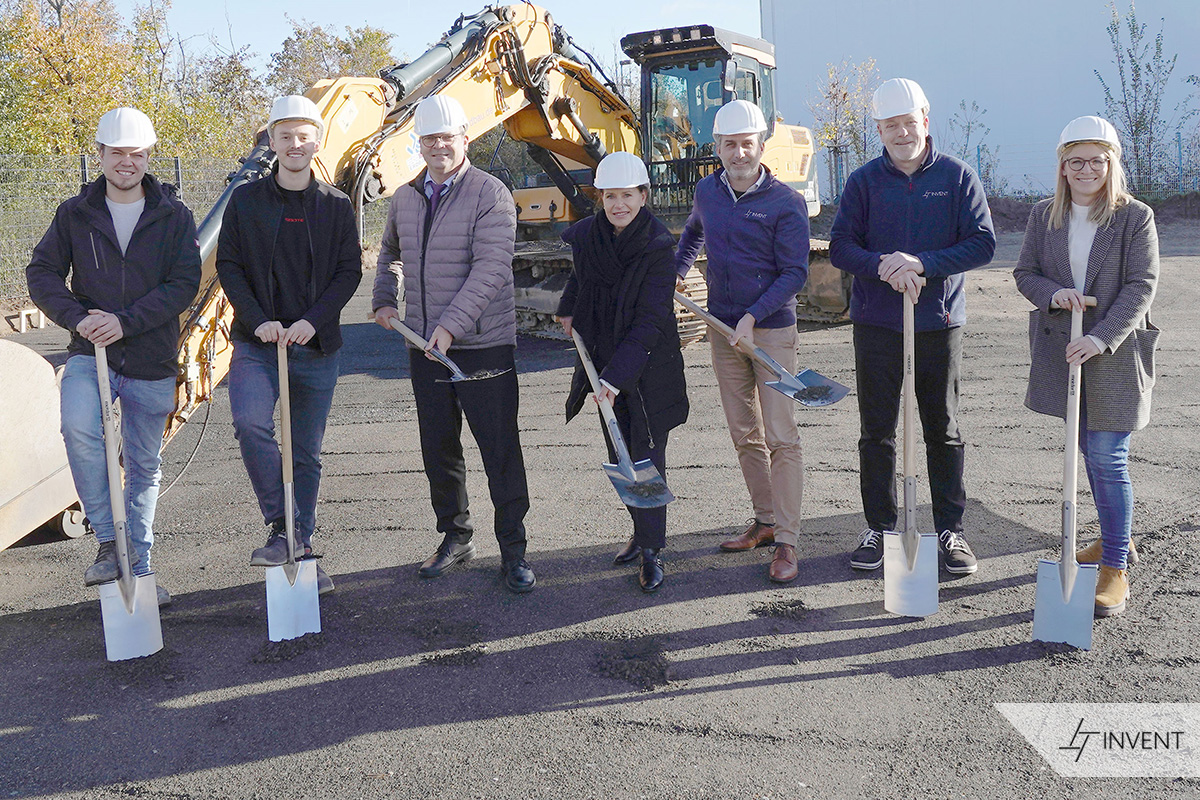Launch of the Heinrich Hertz mission.
Digital transformation is increasingly shaping our professional and personal lives. This requires new technologies that can transport larger volumes of data around the globe quickly and reliably. Communications satellites play a key role in this. The German communications satellite Heinrich Hertz, which will be launched on the last Ariane 5 rocket from Kourou on 4 July 2023, will serve as a platform for testing new technologies in space.
Braunschweig-based INVENT GmbH, a leading company for innovative composite materials in the aerospace industry, has made significant contributions to the Heinrich Hertz satellite mission on behalf of OHB System AG.
“As part of this mission, we carried out an extensive sampling campaign to characterise the component properties. Around 450 samples were produced, tested and evaluated,” reports project manager Martin Sauerbrey.
Based on this data, INVENT’s main contribution to the mission was to design and verify the production of 25 structural panels made of carbon-fibre-reinforced plastics.
INVENT has also developed and manufactured a new type of antenna reflector called H2KAR, which will fly on the Heinrich Hertz satellite as a technology contribution. The elliptical reflector with a diameter of about one metre is made of an optimised CFRP composite and is equipped with an antenna arm and various sensors. The entire antenna assembly weighs around five kilograms.
“The requirements for antenna reflectors are very demanding, depending on the frequency band. They have to be light and compact to keep the launch weight low and take up little space in the launcher. At the same time, they have to be extremely precise under temperature fluctuations and have high thermal and electrical conductivity.”, explains Christoph Tschepe, Head of the Aerospace Division at INVENT GmbH. High thermal conductivity ensures even temperature distribution in the material and reduces component deformation. . High electrical conductivity is necessary to ensure good reflection of the high-frequency radiation in the Ka-band (between 27 and 40 GHz).
This project is funded by the German Federal Ministry of Economics and Climate Protection (BMWK) based on a resolution of the German Bundestag.
About the Heinrich Hertz satellite mission:
The German communications satellite “Heinrich Hertz” was designed and built to orbit the Earth in geostationary orbit for a period of 15 years from 2023. The satellite is based on the SGEO platform (Small Geostationary Satellite), is the size of a van and weighs about 3.5 tonnes. In addition to testing new technologies under space conditions, it will carry out around 20 experiments in the fields of communications, antenna and satellite technology. The Heinrich Hertz satellite mission is being carried out by the German Aerospace Center (DLR) with funding from the Federal Ministry of Economics and Technology (BMWi) in cooperation with the Federal Ministry of Defence (BMVg). The industrial prime contractor is OHB System AG in Bremen. The satellite mission is named after the German physicist Heinrich Rudolf Hertz, who was the first to transmit electromagnetic waves in free space from a transmitter to a receiver in 1886, and after whom the frequency unit “Hertz” was named.
About Ariane 5:
The launch of Heinrich Hertz marks the last flight of the European Ariane 5 ECA launcher. In a total of 116 flights to date, 111 successes and 3 partial successes have been achieved. This makes Ariane 5 one of the most successful launchers ever. The first flight of its successor, Ariane 6, is scheduled for later this year.About INVENT GmbH
As an EN 9100 and Nadcap certified company, INVENT GmbH has been a recognised specialist in innovative fibre composite technologies for lightweight construction since 1996. The company develops and produces high-precision structural components for the aerospace, mechanical engineering, automotive, rail and shipbuilding industries. From the initial idea to series production, INVENT offers its customers a comprehensive package from a single source, including design, production planning, manufacturing processes, mechanical processing, joining and assembly processes as well as painting and quality control. For more information about INVENT GmbH and its innovative fibre composite technologies, please visit www.invent-gmbh.de.




